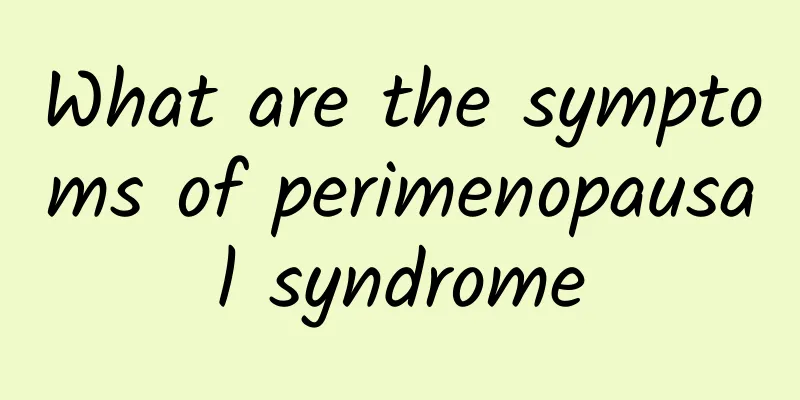Do you have bulimia? Pay attention to 2 out of 5 items!

|
All psychological addictions are inextricably linked to the brain’s reward system. Alcohol addiction is when the brain produces a sense of pleasure from alcohol, which prompts the reward mechanism to continue functioning, thus making people accustomed to drinking. The same principle applies to drug addiction. This type of behavior of taking something to get a reward is closely related to the brain's circuits that regulate appetite. Although alcohol addiction, drug addiction, and food addiction all stimulate the reward center through eating behavior, the nature of food addiction is slightly different. Because eating food is necessary for survival, we can survive even if we quit alcohol and drugs, but we cannot quit food, so food addiction has become one of the most terrible diseases in modern society. The most frightening thing is that drugs are prohibited by law and therefore cannot be easily obtained, but food is everywhere around us, leaving us with nowhere to hide. It doesn't mean that all foods contain addictive ingredients. If the rice, soup, kimchi, salad and meat that Koreans eat every day all contain addictive factors, then people all over Korea would be food addicts. Other foods can cause addiction. Refined carbohydrates such as chocolate, biscuits, flour products with a more obvious sweet taste are representative foods that can cause addiction. Once you have tasted it, you will be unable to stop eating it, and it may cause various diseases such as obesity. This is the so-called "food that induces addictive behavior." Addictive foods are called "highly palatable foods" or foods with high "palatability" in English-speaking countries. The word "kua" means "a strong sweet taste or a taste that melts in the mouth without you noticing". It is not easy to express this word in our vocabulary. If you search the dictionary, you will find the meaning "delicious taste". However, when explaining food addiction, pleasure is explained as "a taste that stimulates the brain's reward mechanism and makes people seek it again and again, with a strong addictive component", so if it is directly translated as delicious taste, it is very likely to be confused with the taste of amino acids similar to MSG. Therefore, I translated it as "pleasure taste", which literally means "the taste of food containing addictive ingredients that makes people feel pleasure." Foods that produce pleasure and reward mechanisms are indeed related to food addiction, but scholars who do not believe that food addiction is a disease argue that such behavior cannot be considered a disease simply because of eating too much sweets. Some scholars even believe that more patients should be prevented from using the term "food addiction." In fact, 15 to 20 percent of obese people are diagnosed with binge eating disorder. But the problem is that there are some people with bulimia among people of normal weight. Even if bulimia is not caused by illness, the chances of bulimia leading to obesity are indeed quite high. Research results show that people who binge eat can experience rapid weight gain and loss, with the numbers going up and down like a roller coaster, and are more likely to experience anxiety, depression, and substance abuse, which are similar to general symptoms of addiction. Binge eating is different from bulimia. Binge eating refers to eating more than other people at one time within a short period of time, eating very quickly, and feeling unable to stop while eating, or being unable to adjust the amount of food eaten. In other words, the person has lost self-control. Even though he or she thinks "I can't eat like this anymore...", he or she does not stop but continues to eat. If two or more of the following five items apply to you, you can be considered to have a tendency to binge eat. ① Eat much faster than others. ② Eat until your stomach feels bloated and uncomfortable. ③Even when you are not hungry, you will still eat a lot of food. ④ I eat alone because I feel embarrassed about eating too much. ⑤ Have you ever felt guilty or depressed because of eating too much? To diagnose it as a disease, you must first confirm whether the symptoms persist. If the above situation occurs at least two days a week, it can be diagnosed as "bulimia." If binge eating is followed by an attempt to lose weight by intentionally causing oneself to vomit, starving oneself, taking diuretics or laxatives, or exercising excessively for more than three hours, it is called "psychogenic bulimia nervosa." The difference between people with bulimia and those with psychogenic bulimia is weight. The weight of patients with psychogenic bulimia is like a rubber band, constantly changing between weight gain and weight loss, so these patients do not gain much weight when they go to the hospital for treatment. However, most patients with bulimia will continue to gain weight, so most of them are obese when they seek treatment. Addiction causes a lack of willpower and withdrawal symptoms, but bulimia causes a lack of willpower without withdrawal symptoms. There are many similarities between bulimia and food addiction. The food eaten by patients with bulimia mainly consists of carbohydrates such as bread and noodles. In addition, bulimia is also accompanied by mental problems such as chronic stress and depression. Therefore, if food addiction becomes more and more serious, the possibility of developing binge eating disorder will increase. Modern people believe that being thin is a basic requirement for beauty. This social and cultural factor is the biggest reason for the increase in the number of bulimia patients. In our daily lives, successful women like entertainers who want to gain a foothold in society must have a slim and attractive appearance. This perception is prevalent in society in an almost compulsory way. While people envy this appearance, they try to lose weight through unreasonable methods such as fasting, hunger strike, and single food diet, and then experience the yo-yo phenomenon, which leads to bulimia. This article is from Crown Culture's "Out of Control Appetite" |
<<: High fat vs. low fat, which one can make you thin and healthy?
>>: Stick exercise for fat loss and body shaping? 4 Myths of Stick Exercise
Recommend
What are the symptoms of uterine adhesion after abortion? Two tests should be done after abortion to rule out uterine adhesion
Abortion is a relatively common surgery, but it i...
What should I eat to treat pelvic inflammatory disease? You need to pay attention to your diet
Patients with pelvic inflammatory disease need to...
What should I do if I find an ovarian cyst during pregnancy? Is there any harm?
Before and after pregnancy, women will undergo so...
What medicine should I take for lower back pain caused by the growth of uterine fibroids? What should I do if I have severe lower back pain caused by uterine fibroids?
Uterine fibroids are a common gynecological disea...
What is the cause of female vulvar leukoplakia?
What is the cause of female vulvar leukoplakia? T...
What are the four major hazards of uterine fibroids? What are the serious consequences of uterine fibroids?
What are the four major hazards of uterine fibroi...
What is congenital absence of vagina?
What is congenital absence of vagina? Nowadays, m...
Body Shaping Tutorial - The Savior for Lower Body Swelling (Part 1)
Office workers sit all day, do they secretly loos...
Analysis of common causes of cervical erosion
As women pay more attention to their health, many...
What symptoms does dysmenorrhea cause?
The term dysmenorrhea must be familiar to most wo...
How to adjust abnormal leucorrhea
Abnormal vaginal discharge is a common health pro...
Study the causes of leukoplakia from the perspective of traditional Chinese medicine
Many people may not have heard of vulvar leukopla...
What department should I go to if I have uterine fibroids after menopause? What should I do if I have uterine fibroids after menopause?
What department should I go to if I have uterine ...
What is cervical hypertrophy? Do I need treatment?
Cervical hypertrophy is a common pathological man...
What causes uterine fibroids? Are uterine fibroids benign tumors?
Although uterine fibroids are a benign tumor, man...









